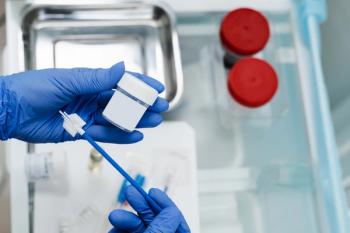
Targeting Cardiac Scarring May Lead to New Heart Disease Treatments
The annual financial burden of heart disease in the United States is $180 billion.
Targeting non-muscle cells in the heart that causes cardiac scarring has the potential to improve clinical outcomes and treatments in heart disease patients, a study published in Nature Reviews Drug Discovery found.
“After disease or injury, the adult mammalian heart repairs by forming a scar, while other classes of vertebrates such as amphibians and fish can regenerate injured cardiac tissue,” said study author Rob Gourdie. “Understanding the molecular difference between scarring and regeneration might help us develop treatments for heart disease in humans.”
Currently, the leading cause of illness and death in the United States is heart disease, and according to the American Heart Association, the annual financial burden of this disease is $180 billion.
“The central problem in heart disease is loss of cardiac muscle and its replacement with fibrotic non-muscle tissue,” Gourdie said.
Fibrotic tissue is made up of fibroblasts, which are responsible for connecting cardiac muscle. Although fibroblasts support the walls of a healthy heart, they are able to thicken and scar during disease.
This hinders the heart from being able to contract effectively and pump blood throughout the body to the brain and the heart muscle itself. Researchers are beginning to learn the complex and active roles that fibroblasts have in maintaining the operation and structure of the heart.
In a healthy heart, the cells are key in forming and maintaining the connective tissue. Furthermore, they secrete molecules that comprise the extracellular matrix.
“Utilizing the natural reparative processes of fibroblasts to modify properties of the forming cardiac scare is quietly emerging as an exciting therapeutic avenue,” Gourdie said. “The concept that fibroblasts link together to form a cardiac sub-system of equal importance to the network of cardiac muscle cells should inform our approach to targeting or even using the connective cells in therapies for heart disease.”
The study authors noted the importance of completely understanding the underlying mechanisms of communication between cardiac cells, which could lead to the development of cell-specific therapeutic delivery systems.
“The topic reviewed in this paper is immensely important to evolving strategies to treat disease that are routinely viewed as hopeless, from common ailments like advanced heart failure, to rare but deadly ones like muscular dystrophy,” said Eduardo Marbán, director of Cedars-Sinai Heart Institute.
For now, researchers plan to focus on more attainable goals for heart disease.
“In the meantime, the more modest goal of modifying scar tissue for patient benefit seems to be a useful tangible objective,” Gourdie said. “Perhaps we can therapeutically nudge or re-engineer the scarring process to improve clinical outcomes for people with heart disease.”
Newsletter
Stay informed on drug updates, treatment guidelines, and pharmacy practice trends—subscribe to Pharmacy Times for weekly clinical insights.




















































































































































































































